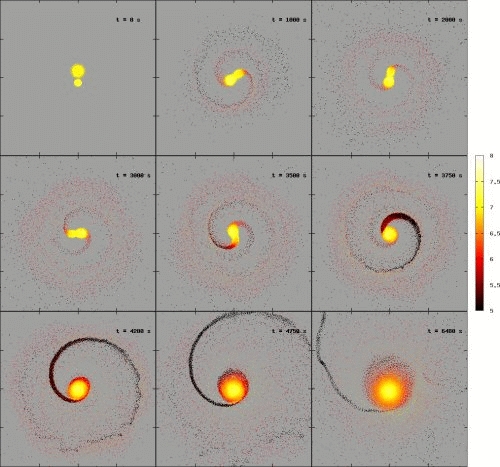|
Up to now, there had hardly been performed chemical analysis for this type of start. Type-R stars are peculiar red giant stars, as they show a higher presence of carbon than oxygen in their atmosphere (the usual composition in the Universe is exactly the opposite). They can be classified in hot-R starts and cold-R stars, depending on their effective temperature. In the case of R-cold stars, this is the first chemical analysis of these characteristics carried out worldwide, whereas for R-hot stars, the existing chemical analyses were very old (more than 25 years) and with a lower spectral resolution than that of the UGR study. The research has been conducted by Olga Zamora Sánchez and supervised by professors Carlos Abia and Inmaculada Domínguez. The scientists of the University of Granada have also studied the essential observational features of type-R stars (distribution in the Milky Way, kinematics, luminosity, etc.).
A 23-star sample This research work has determined the chemical composition of a 23 type-R star sample (both hot and cold), using spectrums in the optics with high-spectral resolution, in order to obtain information about the origin of this type of stars. To this end, the scientists performed observations with a 2.2-metre in diameter telescope placed in Calar Alto (Almeria), and carried out a chemical analysis of elements such as carbon, oxygen, nitrogen, lithium and other heavy metals, such as technetium, strontium, barium or lanthanum. Thus, the scientists have concluded that R-cold stars are identical to type-N stars (or normal carbon stars) originated in the AGB phase, whereas R-hot stars are different. About 40% of the R-hot stars of the sample were erroneously classified up now, and therefore the portion of these stars with regard to red giant stars could be considerably reduced regarding previous estimations thanks to this work.
|
 |
|
The figure represents the temporary
hydrodynamic development (projection in the X-Y plan) of the
binary system made up of a helium white dwarf and the core of a
red giant, from the zero instant until their complete fusion, in
a time of about 6,400 seconds. Every box has an estimated size
of about the radius of the Sun. The colours are proportional to
the logarithm of density (black is less dense, white is denser). |
The most comprehensive analysis The analysis of the University of Granada is the most complete conducted worldwide up to now (from an observational and theoretical approach) about type-R spectral stars. Besides, the scientists have carried out a numeric simulation for the first time of the most favourable scene for the formation of a R-hot star: the fusion of a helium white dwarf with a red giant. In the end, this scene has turned out to be unviable, and therefore the explanation of the origin of R-hot stars keeps representing a challenge for present star and nucleosynthesis development models. Although the UGR scientists warn that this type of study has not immediate applications, the information obtained could be very valuable in the future as carbon, as everybody knows, is very important for the possible development of life in the Universe. Therefore, they say, explaining the origin of this element in the stars will be useful to study the production of one of the basic ingredients of life that we know. The results of this research work will be sent for its publication in the near future in the journal Astronomy & Astrophysics.
|